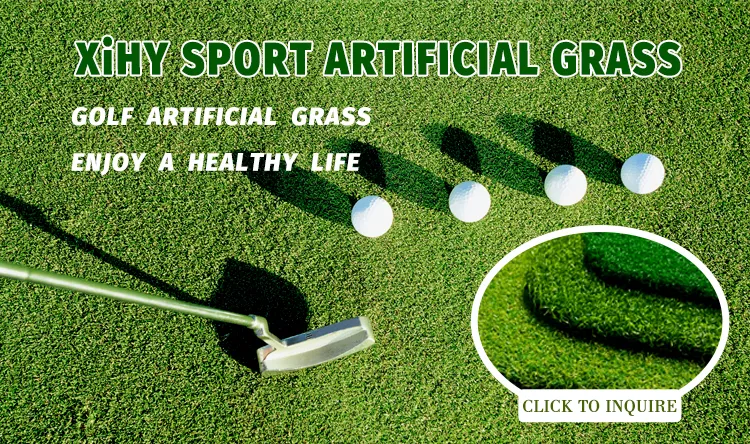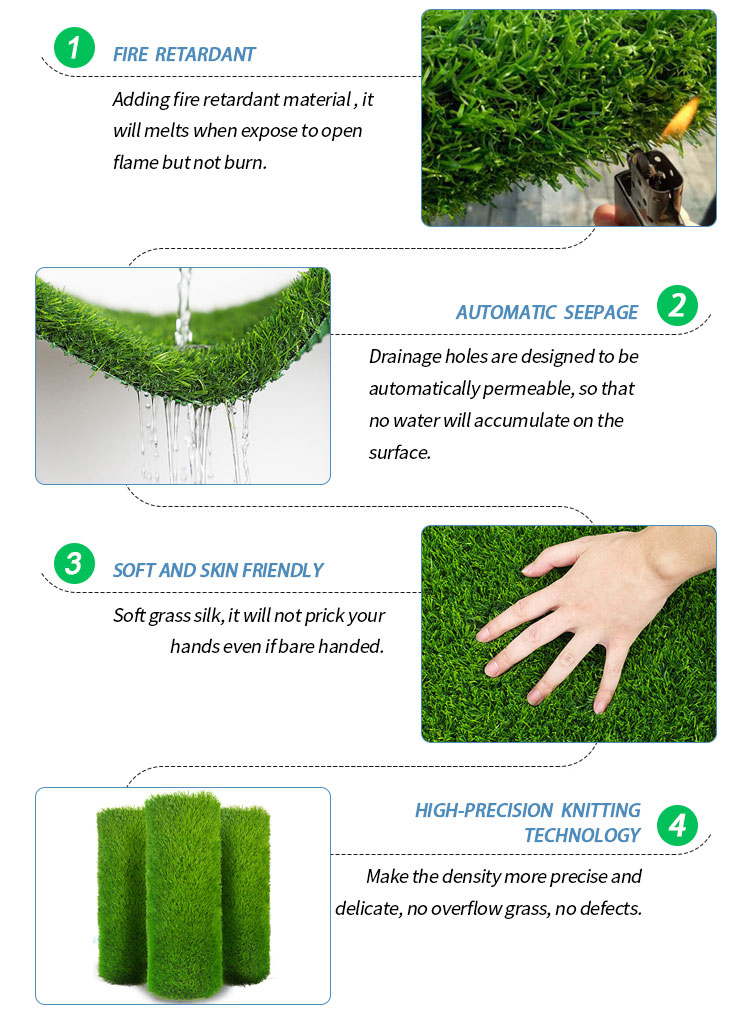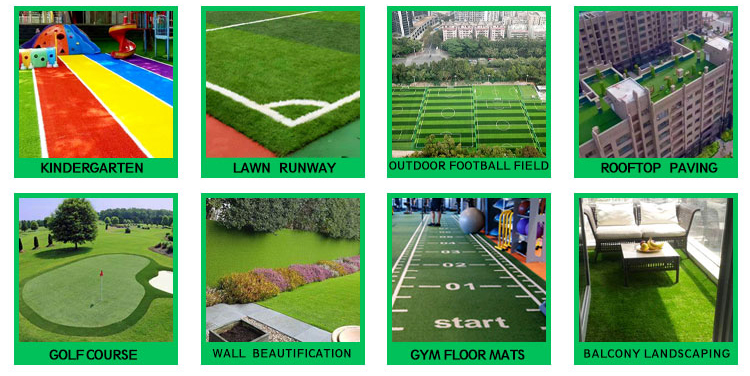![Artificial grass Artificial grass]()
Artificial Cricket Turf Product Description
The fibres undergo UV stabilisation treatment during production, maintaining colour integrity under prolonged exposure to high temperatures and intense sunlight without fading or chalking. This fibre structure ensures consistent ball speed and controlled bounce, delivering professional-standard performance for batting and bowling practice.
Common Specifications:
Fibre Type: PE straight filament / PP curled filament
Pile Height: 10–30 mm (Common: 12 mm, 18 mm, 20 mm)
Density: 12,000–18,000 stitches/m², customisable
Backing Type: PP + mesh composite backing (double-layered), SBR rubber coating or PU backing
Colour: Grass green / Dark green (customisable boundary lines)
Drainage Method: Rear drainage hole design
The Advantages of Artificial Cricket Turf
Consistent athletic performance
The dense structure and level surface of artificial cricket turf effectively minimise ball speed variation, delivering a stable and reliable competitive experience for batting and bowling practice.
Exceptional Durability and Extended Lifespan
PE+PP composite fibres deliver high-strength abrasion resistance, resisting cracking, flattening, or deformation even with prolonged use – outlasting natural turf.
All-Weather Usability
Weather-independent, requiring no watering or mowing, it maintains training schedules regardless of monsoons or heatwaves, serving as a year-round professional sports surface.
![Artificial grass Advantages]()
Artificial cricket turf is suitable for various indoor and outdoor cricket facilities, including:
Cricket club training grounds
School or university cricket pitches
Community sports centre training areas
Home backyard practice areas
Indoor cricket nets
Cricket nets for dedicated batting and bowling practice
Whether for professional match venues or daily training facilities, artificial cricket turf maintains consistent ball speed and uniform bounce performance.
![Artificial grass application]()
FAQ
1. Is artificial cricket turf suitable for indoor or outdoor use?
Both are viable. Outdoor turf requires UV resistance and anti-ageing properties, while indoor applications prioritise surface evenness and underfoot comfort.
2. Does artificial cricket turf require infill?
Most artificial cricket turf employs a sand-infill structure to enhance ball speed consistency and surface uniformity; though some non-infill variants exist, suitable for indoor training facilities or multi-purpose venues.
3. What is the lifespan of artificial cricket turf?
Under normal maintenance and usage conditions, artificial cricket turf lasts 6–10 years, with longevity dependent on usage frequency and site management practices.































